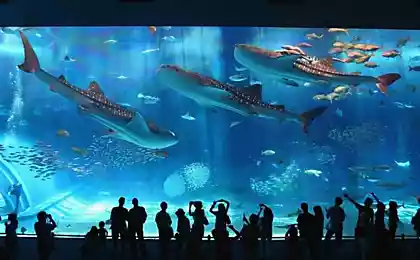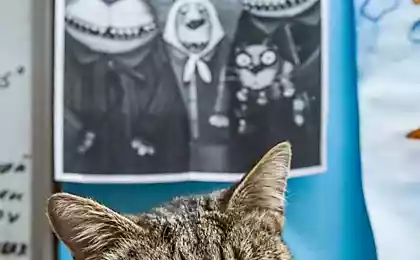1286
10 amazing tiny species
Earlier we talked about the little-known large animals. Now it's time to go in the opposite direction and to delve into some of the most incredible and fascinating species of tiny living on the planet today.
10. Fairy Penguin
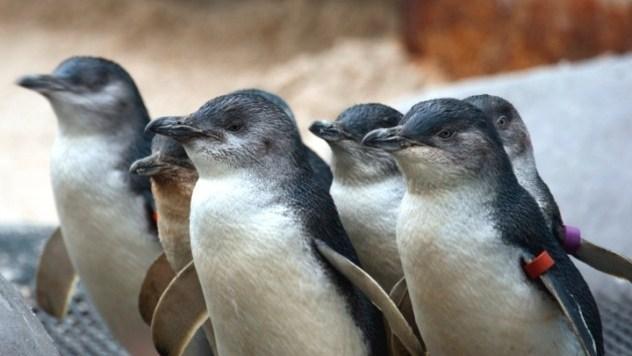
Classic penguin resembles giant inhabitants of the frozen Antarctic, where some species can reach over 1 meter in height. However, the warm beaches in the temperate waters of southern Australia and New Zealand are also home to a penguin - and this kind of a tiny penguin. In fact, the fairy penguin reaches only 13 inches (33 cm) in height, making it barely larger than most of the quail and about the same size as a small crow.
Just look at the 1, 5 kilogram (3, 3 pounds) flightless seabird marching along the beach, to charm even the most experienced ornithologist. Bird feathers gleaming in the brilliant blue hues, bumping sailors on the idea to give them an alternative name "Little Blue Penguin." In recent years, 500 000 penguin population was threatened because of the attacks of lizards and accidents on the road. In such a turn of events were held Shepherd to help protect the endangered population.
9. buff-faced pygmy parrot
It is unlikely that you will find this parrot on the shoulder of a pirate. Buff-faced pygmy parrot lives in the forests of New Guinea. Its growth is just simply 8, 4 cm (3 inches 2) weighing 10-15 grams (0, 35-0, 5 ounces). These tiny, jewel-like birds - are the smallest parrots on the planet - even smaller than the size of hummingbirds.
In fact, it would require more than one Dyatlova baby to catch up with the average size and weight of a sparrow.
Birds have accurate proportions and get food as well as their large-sized counterparts, eat lichen, bark, seeds and fruit. Dyatlova baby inhabit lowland tropical forests, as well as live in the cooler foothills forests and luckily through the places of their settlements are not endangered.
8. Light-shark
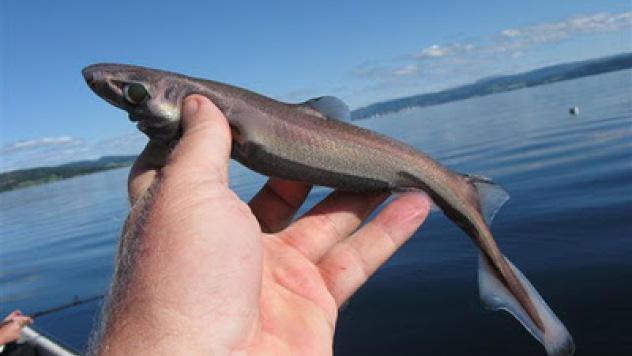
"Jaws" lived in fear of the depths of the human soul huge, devouring humans by sharks. Although a lot of sharks up to 5-meters in length, in the coastal waters of the continental slopes of Venezuela and Colombia can be found strange shark, very different sizes. In length it reaches a maximum of 21, 2 centimeters (8.3 inches), pygmy lamp shark - one of the three smallest shark in the world and is often considered the record in its size.
Referred to the family of sharks katranov this toothy little tramp is placed in a human hand, but has embarrassingly typical lines and features of sharks - including the mouth full of teeth, filled with more than 25 rows of teeth in the upper jaw and 30 more than at the bottom. To name a depth 283 - 439 m (92 - 1, 440 feet), the shark is still relatively unknown, but named because of their ability to glow bioluminescence for reasons not yet fully understood.
7. Mexican dwarf crayfish

While the endangered Tasmanian giant crayfish may reach 1 meter (3 feet) in length, in the world there is another species of freshwater crustaceans. Mexican dwarf crayfish reaches 3 to 8 centimeters (1 and 5 inches) in length. From a distance, it resembles the creation of shrimp, but if you look closely, you can see tiny tentacles - a feature crayfish.
Cute crustacean - and the hunter and scavenger may be a brownish color with dark stripes, or a beautiful red color. Dwarf crayfish lives in lakes with moderately warm water, which inhabits muddy bottom areas with little vegetation. In America, you can make it at home as a pet, if you can look forward to a 2-3 gallon miniakvariumom with filtered water medium alkalinity.
6. falcon (shrikes)
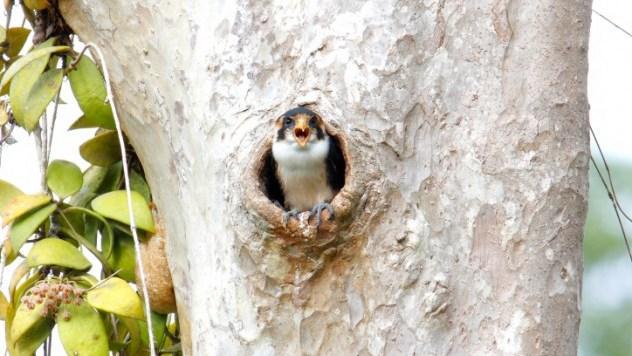
Birds of prey - the wolves and lions of the world bird - usually headed by a top dominant predators. They can be found in China, Southeast Asia and the Malay Archipelago. From the size of up to 14 centimeters (5, 5 inches) 27 centimeters (11 inches) wing span, and the smallest of the five known species shrikes may weigh 35 grams (1.2 ounces) and are the smallest birds of prey in the world. These predatory dwarf smaller than sparrows and inhabit the forests, wetlands and fields.
Shrikes have a pointed beak with a disproportionately large claws on their feet, in order to grab and punch their prey. Some Shrikes hunt dragonflies and wasps caught in their nests. They can also catch the small amphibians, lizards and even small birds, such as they are in size.
5. Small salamanders
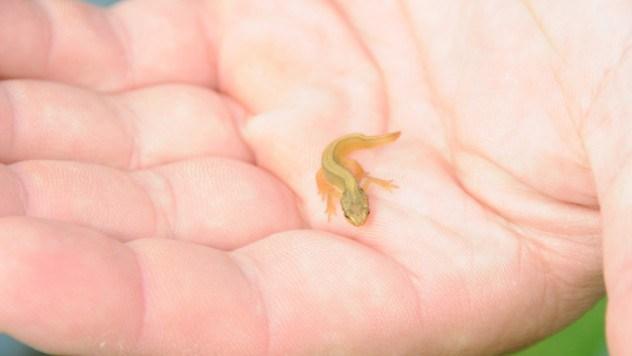
Aptly named small salamanders of the genus Thorium affect its size. Himself genus includes several species that inhabit moist habitats from North America to Brazil. Unlike larger than the average Chinese giant salamanders shown in the previous top, small salamanders can be easily measured in millimeters and centimeters. The smallest known species, Thorius arboreus, less than two centimeters in length (a little less than one inch).
Not surprisingly, Thorius arboreus - the smallest known salamander in the world, has a sporting unusually thin body and a compressed shape of the head in addition to its infinitesimal adult length. Mexican species of endangered animals that live in wet, dry upland forests along the Atlantic Ocean in the region of the Sierra de Juarez. Today, there are still a small species of salamanders.
4. Dwarf pig
Wild pigs typically include a number of larger and stronger animals in nature. Endangered pygmy pig from South Asia is a delightful exception. Its size is only 25 centimeters (10 inches) in height, these brown mini-pigs live in the woods and grassy weigh nine kilograms (less than 20 pounds)), is no more. Unlike other porcines, dwarf pigs do like birds' nests from grass to sleep in them every night. The original habitat of the population is in India and Nepal, but loss of habitat driven dwarf pig in a handful of isolated areas. It is believed that there are only a few hundred.
British naturalist Gerald Durrell Indian origin contributed to the support of the protection of dwarf pigs. He said of creatures: "I've actually never met a dwarf pig, but I have a deep, warm attitude to all members of the family of pigs. I do not care an ordinary pig or a dwarf, I feel that this should be a charming creature ".
3. Pink fairy armadillo
It has a pink conch, and it is a battleship, but you suspect based on the theme of our "stamp", this pink patrol meadows also ridiculously small, only 13-15 centimeters (5-6 inches) in length. This is the smallest of all species of armadillo is a timid, solitary animals, shockingly bright pink like a flamingo, dressed in a pink shell. Strange color of the animal is uniquely associated with the blood vessels that pass through the tough outer shell. A native of open grasslands of Argentina, prichudlivoobrazny armadillo burrows underground in sandy soil, and almost no one has ever seen. About secretive animals legendary among locals and those who study it - for example, the Argentine researcher Mariella superinstanton watching one armadillo for over 10 years.
2. vaquita
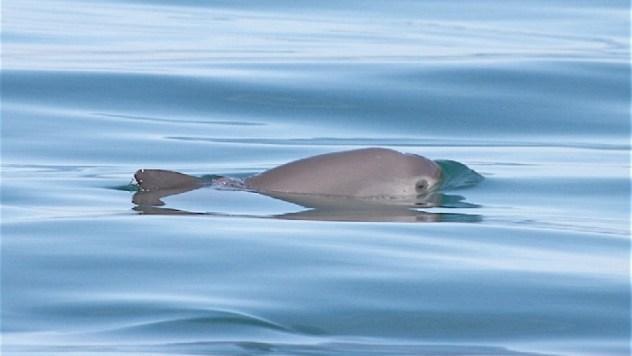
Efforts to save whales were concentrated on our complicated relationship with the largest animals on earth. But one of the most endangered cetacean, Vaquita (in Spanish "Ladybird"), smaller than a person. Weighing in at just 30-55 kilograms (65-120 pounds), vaquita reaches a size of 1, 2-1, 5 meters (4-5 feet) in length.
With a rounded head, fins small and sleek body, this tiny Mexican cetaceans also occurs rarely.
With an extremely limited range of life-its kind, porpoises are found only in the innermost parts of the Gulf of California, where the Baja peninsula extends from the North American mainland. These protected waters have allowed the animal to develop. But fishing nets, human intervention, and inbreeding have turned the tiny ecological environment in the trap of reducing the number of urgent need of assistance vaquita.
1. The smallest fish in the world
The smallest fish in the world - and the smallest vertebrate - considered view of carp called Paedocypris progenetica, discovered in 2006 on the Indonesian island of Sumatra. Some adults of the species reach a length of 7, 99 mm (0, 3 inches). While living in the swamps with a pH of 3, 0, this tiny relative of the goldfish are able to survive in the water is 100 times more acidic than rainwater. Scientists have found that being transparent is the smallest vertebrate species in the world. Zoologist Ralf Britz of the British Museum of Natural History noted that fish was "one of the strangest fish that he had seen in his career," noting that the Asian mikrokarpa were specific prehensile fins and the shape of the body, usually characteristic for the larval fish - including brain unprotected skull. Constant juvenile indications suggest a genetic selection for neoteny.
10. Fairy Penguin

Classic penguin resembles giant inhabitants of the frozen Antarctic, where some species can reach over 1 meter in height. However, the warm beaches in the temperate waters of southern Australia and New Zealand are also home to a penguin - and this kind of a tiny penguin. In fact, the fairy penguin reaches only 13 inches (33 cm) in height, making it barely larger than most of the quail and about the same size as a small crow.
Just look at the 1, 5 kilogram (3, 3 pounds) flightless seabird marching along the beach, to charm even the most experienced ornithologist. Bird feathers gleaming in the brilliant blue hues, bumping sailors on the idea to give them an alternative name "Little Blue Penguin." In recent years, 500 000 penguin population was threatened because of the attacks of lizards and accidents on the road. In such a turn of events were held Shepherd to help protect the endangered population.
9. buff-faced pygmy parrot
It is unlikely that you will find this parrot on the shoulder of a pirate. Buff-faced pygmy parrot lives in the forests of New Guinea. Its growth is just simply 8, 4 cm (3 inches 2) weighing 10-15 grams (0, 35-0, 5 ounces). These tiny, jewel-like birds - are the smallest parrots on the planet - even smaller than the size of hummingbirds.
In fact, it would require more than one Dyatlova baby to catch up with the average size and weight of a sparrow.
Birds have accurate proportions and get food as well as their large-sized counterparts, eat lichen, bark, seeds and fruit. Dyatlova baby inhabit lowland tropical forests, as well as live in the cooler foothills forests and luckily through the places of their settlements are not endangered.
8. Light-shark

"Jaws" lived in fear of the depths of the human soul huge, devouring humans by sharks. Although a lot of sharks up to 5-meters in length, in the coastal waters of the continental slopes of Venezuela and Colombia can be found strange shark, very different sizes. In length it reaches a maximum of 21, 2 centimeters (8.3 inches), pygmy lamp shark - one of the three smallest shark in the world and is often considered the record in its size.
Referred to the family of sharks katranov this toothy little tramp is placed in a human hand, but has embarrassingly typical lines and features of sharks - including the mouth full of teeth, filled with more than 25 rows of teeth in the upper jaw and 30 more than at the bottom. To name a depth 283 - 439 m (92 - 1, 440 feet), the shark is still relatively unknown, but named because of their ability to glow bioluminescence for reasons not yet fully understood.
7. Mexican dwarf crayfish

While the endangered Tasmanian giant crayfish may reach 1 meter (3 feet) in length, in the world there is another species of freshwater crustaceans. Mexican dwarf crayfish reaches 3 to 8 centimeters (1 and 5 inches) in length. From a distance, it resembles the creation of shrimp, but if you look closely, you can see tiny tentacles - a feature crayfish.
Cute crustacean - and the hunter and scavenger may be a brownish color with dark stripes, or a beautiful red color. Dwarf crayfish lives in lakes with moderately warm water, which inhabits muddy bottom areas with little vegetation. In America, you can make it at home as a pet, if you can look forward to a 2-3 gallon miniakvariumom with filtered water medium alkalinity.
6. falcon (shrikes)

Birds of prey - the wolves and lions of the world bird - usually headed by a top dominant predators. They can be found in China, Southeast Asia and the Malay Archipelago. From the size of up to 14 centimeters (5, 5 inches) 27 centimeters (11 inches) wing span, and the smallest of the five known species shrikes may weigh 35 grams (1.2 ounces) and are the smallest birds of prey in the world. These predatory dwarf smaller than sparrows and inhabit the forests, wetlands and fields.
Shrikes have a pointed beak with a disproportionately large claws on their feet, in order to grab and punch their prey. Some Shrikes hunt dragonflies and wasps caught in their nests. They can also catch the small amphibians, lizards and even small birds, such as they are in size.
5. Small salamanders

Aptly named small salamanders of the genus Thorium affect its size. Himself genus includes several species that inhabit moist habitats from North America to Brazil. Unlike larger than the average Chinese giant salamanders shown in the previous top, small salamanders can be easily measured in millimeters and centimeters. The smallest known species, Thorius arboreus, less than two centimeters in length (a little less than one inch).
Not surprisingly, Thorius arboreus - the smallest known salamander in the world, has a sporting unusually thin body and a compressed shape of the head in addition to its infinitesimal adult length. Mexican species of endangered animals that live in wet, dry upland forests along the Atlantic Ocean in the region of the Sierra de Juarez. Today, there are still a small species of salamanders.
4. Dwarf pig
Wild pigs typically include a number of larger and stronger animals in nature. Endangered pygmy pig from South Asia is a delightful exception. Its size is only 25 centimeters (10 inches) in height, these brown mini-pigs live in the woods and grassy weigh nine kilograms (less than 20 pounds)), is no more. Unlike other porcines, dwarf pigs do like birds' nests from grass to sleep in them every night. The original habitat of the population is in India and Nepal, but loss of habitat driven dwarf pig in a handful of isolated areas. It is believed that there are only a few hundred.
British naturalist Gerald Durrell Indian origin contributed to the support of the protection of dwarf pigs. He said of creatures: "I've actually never met a dwarf pig, but I have a deep, warm attitude to all members of the family of pigs. I do not care an ordinary pig or a dwarf, I feel that this should be a charming creature ".
3. Pink fairy armadillo
It has a pink conch, and it is a battleship, but you suspect based on the theme of our "stamp", this pink patrol meadows also ridiculously small, only 13-15 centimeters (5-6 inches) in length. This is the smallest of all species of armadillo is a timid, solitary animals, shockingly bright pink like a flamingo, dressed in a pink shell. Strange color of the animal is uniquely associated with the blood vessels that pass through the tough outer shell. A native of open grasslands of Argentina, prichudlivoobrazny armadillo burrows underground in sandy soil, and almost no one has ever seen. About secretive animals legendary among locals and those who study it - for example, the Argentine researcher Mariella superinstanton watching one armadillo for over 10 years.
2. vaquita

Efforts to save whales were concentrated on our complicated relationship with the largest animals on earth. But one of the most endangered cetacean, Vaquita (in Spanish "Ladybird"), smaller than a person. Weighing in at just 30-55 kilograms (65-120 pounds), vaquita reaches a size of 1, 2-1, 5 meters (4-5 feet) in length.
With a rounded head, fins small and sleek body, this tiny Mexican cetaceans also occurs rarely.
With an extremely limited range of life-its kind, porpoises are found only in the innermost parts of the Gulf of California, where the Baja peninsula extends from the North American mainland. These protected waters have allowed the animal to develop. But fishing nets, human intervention, and inbreeding have turned the tiny ecological environment in the trap of reducing the number of urgent need of assistance vaquita.
1. The smallest fish in the world
The smallest fish in the world - and the smallest vertebrate - considered view of carp called Paedocypris progenetica, discovered in 2006 on the Indonesian island of Sumatra. Some adults of the species reach a length of 7, 99 mm (0, 3 inches). While living in the swamps with a pH of 3, 0, this tiny relative of the goldfish are able to survive in the water is 100 times more acidic than rainwater. Scientists have found that being transparent is the smallest vertebrate species in the world. Zoologist Ralf Britz of the British Museum of Natural History noted that fish was "one of the strangest fish that he had seen in his career," noting that the Asian mikrokarpa were specific prehensile fins and the shape of the body, usually characteristic for the larval fish - including brain unprotected skull. Constant juvenile indications suggest a genetic selection for neoteny.






